Bellozanne STW (2018)
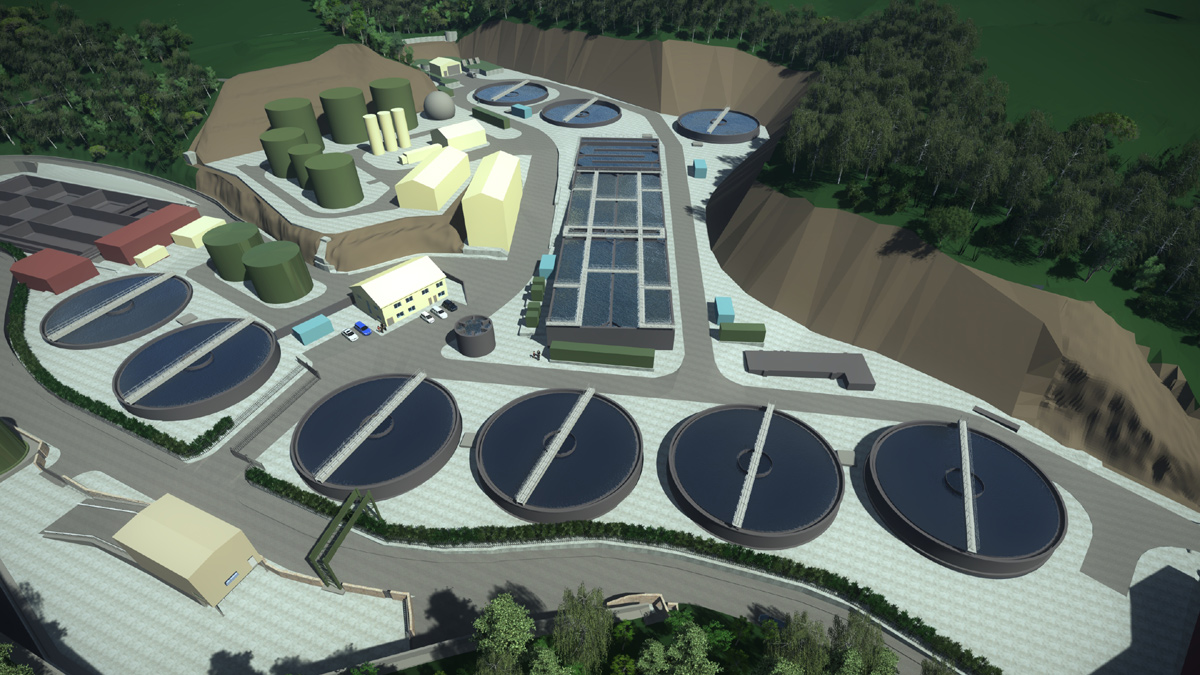
Figure 1: 3D model produced for planning application - Courtesy of Sweco UK Ltd
Jersey is the largest of the Channel Islands and is a Crown Dependency located off the coast of Normandy, France. The island is governed by the States of Jersey (SoJ) which has responsibility for the management of the Island’s finances and operation of its public services. Jersey does not sit within the European Union but adopts and incorporates UK and EU regulations into law on the basis of best practice. The Department for Infrastructure (DfI) is an operational department of the SoJ with particular responsibility for minimising the impact of waste on the environment, developing on-Island transport networks and providing public amenities and infrastructure. Sweco has worked with the DfI for almost twenty years and since 2014 has partnered with the DfI under its Technical Consultancy Framework.
The Island of Jersey and its population
The largest town and capital of the island is St Helier. The majority of the population live in or close to the capital but there are several other villages and numerous small settlements across the island. The last census took place in 2011 when the resident population of Jersey was found to be 97,100. Currently a little under 90% of the residential properties are connected into the sewerage system and serviced by Bellozanne Sewage Treatment Works (STW).
A small number of properties on the north side of the island are served by a DfI operated packaged treatment plant at Bonne Nuit and the remaining properties discharge into private STWs, septic tanks or tight tanks. The isolated properties are connected to the sewerage system as and when the work is practicable and all new developments are connected as standard.
The permanent residents are only part of the story in terms of predicting a design horizon population. Tourist numbers are difficult to forecast as they can be affected by a wide range of variables, most notably the state of the UK economy. There has been no significant trend of growth or decline in tourism over recent years and it is assumed that the peak tourist population will remain constant at around 15,000 over the 20-year forecast period. Similarly, the peak of other temporary residents (seasonal workers, students and people visiting friends and relatives) was assumed to remain constant at around 4,000.
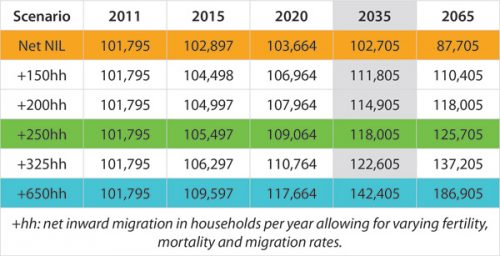
Table 1 – Projected population connected to Bellozanne STW
Table 1 (above) shows the completed forecasts of the connected population as it was completed in 2013 for use in the SoJ Waste Water Strategy (WWS). The design horizon for the strategy was set as 2035, being a 20-year plan from the notional baseline of 2015. The design horizon population was then selected as 118,000 as the +250hh projection had been identified to be the most likely trend. There is little industry on the island so a further increase for population equivalent was not considered necessary.
Figure 2 (below) shows only the minimum, maximum and selected population profiles.
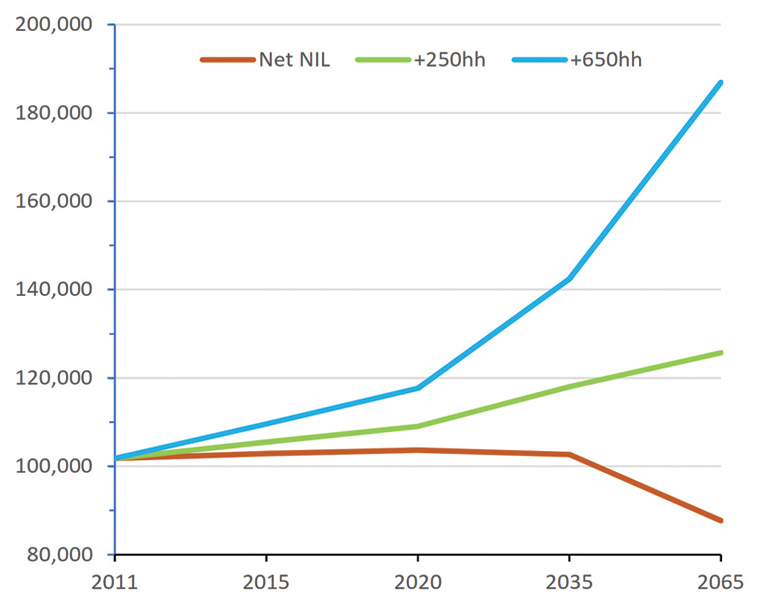
Figure 2: Minimum, maximum and selected population growth
The existing Bellozanne STW
Up until the 1950s, untreated sewage was discharged directly onto a number of beaches around the island with obvious hazards for public health. Having concluded that this could not continue, SoJ decided to construct a central sewage treatment works as this was considered to be more efficient than several smaller works in different locations. At the time, the Bellozanne Valley was an obvious choice because it was relatively remote, already a centre for the little industry present on the island and was the natural centre of the drainage system.
Bellozanne STW was commissioned in 1959 and designed to provide full treatment for a population of 57,000 with effluent to the current Royal Commission standards. In the intervening years it has been improved and upgraded to take account of increasing demand, higher environmental standards and improved process technology. Presently, it treats flows from a connected resident population of approximately 87,000 with a summer peak of up to 110,000.
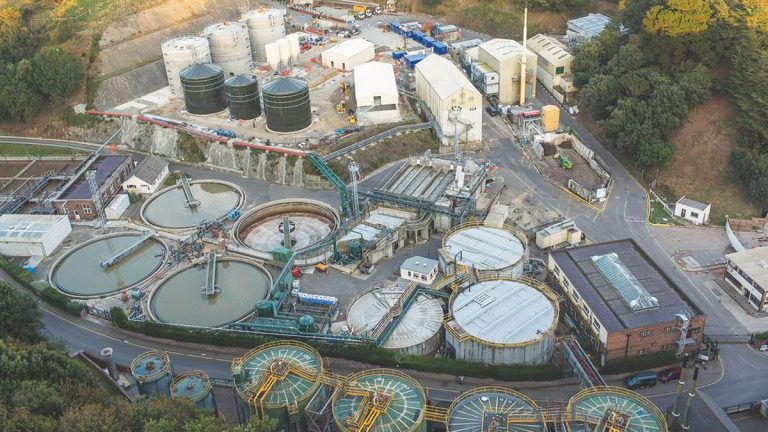
Figure 3: Existing Bellozanne STW site 2014. Looking northeast over the inlet works and PSTs with the new sludge treatment facility under construction – Courtesy of Matt Porteus Photography
The site receives flows of up to 1,100l/s from the network with the majority arriving from First Tower Pumping Station. All influent is screened, de-gritted and passes through the primary settlement tanks. Flow to full treatment is 650l/s, but poor flow control means that up to 800l/s can pass to the activated sludge plant (ASP) during periods of maximum inflow. The storm overflow is mixed with the final effluent before passing through a UV disinfection plant.
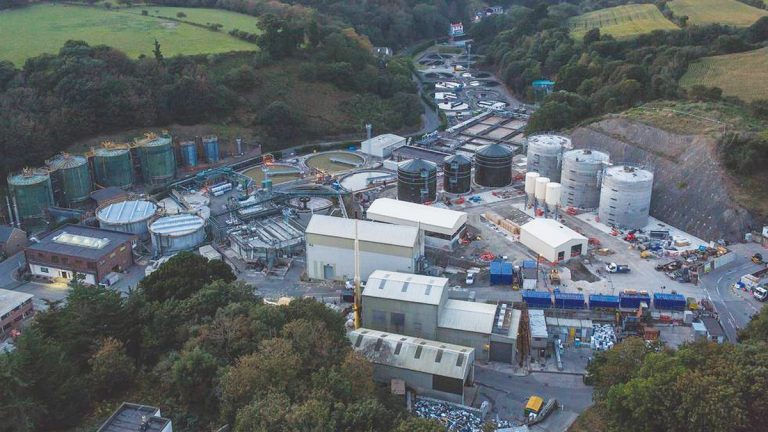
Figure 4: Existing STW in 2014 looking northwest with the aeration lanes and FSTs visible up the valley – Courtesy of Matt Porteus Photography
The proposals for Bellozanne STW
Having operated for almost 60 years the majority of the existing Bellozanne STW is life expired, inefficient and requires significant ongoing maintenance. While a series of upgrades allowed the site to continue to treat the island’s waste water to a relatively high standard there is no practicable way to increase the capacity for the 2035 design horizon without major works. Having analysed numerous options the WWS concluded that a replacement STW was the most appropriate solution.
Concept design and early contractor involvement
The feasibility design considered as part of the WWS was developed through a period of early contractor involvement (ECI) by the DfI, Sweco (acting as its technical consultant) and a consortium of Doosan Enpure Ltd (DEL) and Farrans Construction known as DFC. The responsibilities of the consortium were broadly divided with DEL delivering the Process and meiCA aspects, and Farrans Construction delivering the civil aspects. Pell Frischmann partnered with DFC to provide civil and structural design input. DEL also worked with the DfI to continue development of the MEICA design after the ECI phase was completed.
Site constraints
The land available for the construction of the new STW is extremely limited and the existing STW must be kept fully operational throughout the construction period. In order to satisfy these constraints, the DfI has carried out a series of accommodation works projects to create space for the new STW to be built in phases and in parallel, before sections of the existing works are decommissioned and demolished.
The first of these projects was the demolition and site clearance of the old sludge digestion plant. This site is separated from the main works by Bellozanne Road and will be used for the new Tanker Import Facility. The DfI has also relocated the Household Waste Recycling Centre and is currently building a new clinical waste incinerator at its La Collette Solid Waste Management site. On completion, the existing installations at Bellozanne will be demolished and these accommodations works will have cost a total of £6m.
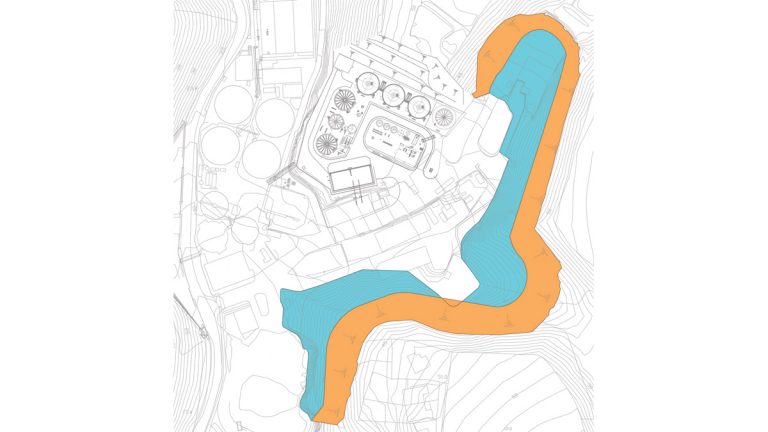
Figure 5: Plan showing extent of hillside removal and re-profiling in blue and the new slopes in orange – Courtesy of Sweco UK Ltd
The largest accommodation project has been the removal of approximately 70,000m3 of rock to widen the existing valley (Figure 5 – above) and allow for the construction of enough of the new works to treat the existing incoming flow before sections of the existing STW are demolished. As shown in Figures 6 and 7 (below), stabilising the exposed slopes required some 2,700 anchors that, due to the fractured nature of the Jersey shale, were up to 13m long.
Excavation and stabilisation works cost approximately £5.2m; however, this was partially offset as the excavated material was used in the DfI’s land reclamation project at La Collette.
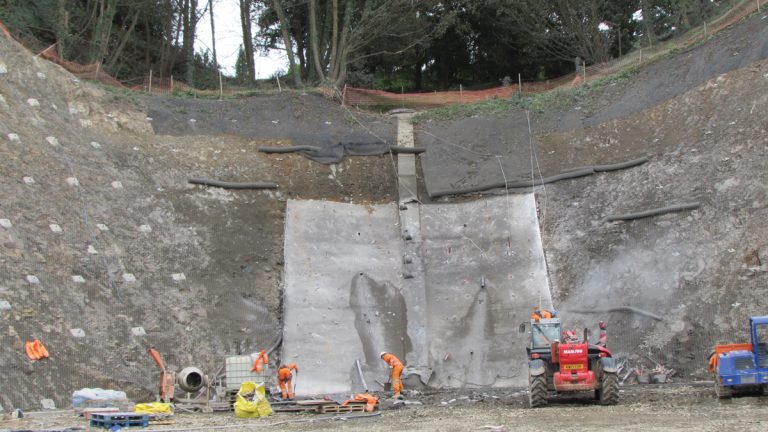
Figure 6: Hillside removal underway – Courtesy of Sweco UK Ltd
Dealing with storm flows and interacting with the network
Storm flows that reach the STW are only partially treated before spilling and a key driver of the WWS was to reduce both these spills and untreated spills from the wider network. One of the first requirements for the new STW was therefore to incorporate storm tanks within the design. Initially these were to be new structures but during the ECI phase it was identified that if the existing ASP aeration lanes could be retained, they could be re-purposed as storm tanks. The capacity of the existing tanks is approximately 6,000m3 which is sufficient to hold two hours of flow at the proposed flow to full treatment of 830 l/s (FFT excluding works returns).
Flows of sewage are delivered to the Bellozanne site by way of a mixture of gravity sewers and rising mains. The sewer system on Jersey is particularly complex and contains 109 (No.) pumping stations, the majority of which are controlled via telemetry. A new integrated network model was built and subsequently verified by Sweco in 2010/11. The model was updated in 2015 to include the proposed STW so that the operation of the terminal pumping station at First Tower, the existing 25,000m3 storage tank at Fort Regent (known as ‘the Cavern’), and the proposed inlet storm tanks could be fully optimised. The integrated model has also been used as a design tool for a number of surface water separation schemes and to provide the DfI with a better understanding of how their sewer network operates.
The maximum flow arriving at the works will be 1450 l/s and, although this condition is highly unlikely to occur for any sustained period of time, the proposed storm tanks will hold the excess flow for over 2.5 hours. During a typical storm (1 in 10 year event) the tanks will provide up to six hours of storage.
Prior to the development of the integrated model, there was no active interface between the STW and the First Tower Pumping Station. The model was used to develop an operating regime that is predicted to reduce the spills into St Aubin’s Bay in St Helier by 90% over the course of a typical year. The new operating regime will direct all flow to the STW until the storm tanks are close to overflowing (95% full). At this point First Tower Pumping Station will reduce its throughput to match the STW FFT. Storm flows will then fill the 25,000m3 Cavern and, if this also approaches capacity, First Tower will return to pumping all flows to the STW. Storm flows will then cause the storm tanks to overflow but will receive partial treatment of screening, de-gritting, settlement and disinfection before combining with the final effluent for discharge. The new regime will ensure that spills of untreated sewage are minimised.
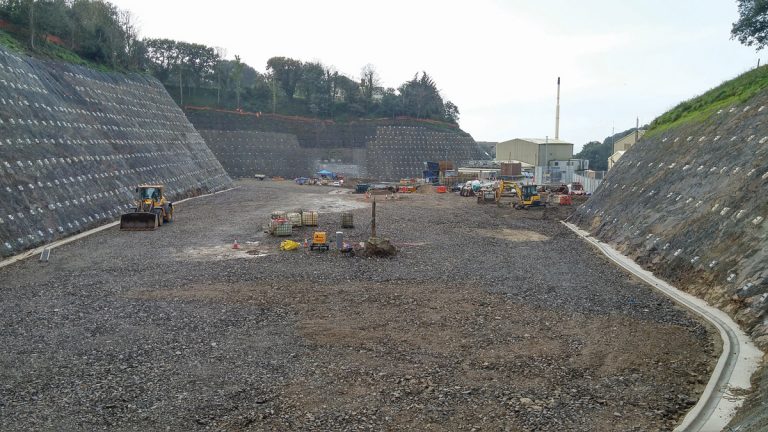
Figure 7: Hillside removal completed, overlooking the site of the proposed inlet works – Courtesy of Department for Infrastructure
Bellozanne STW flow to full treatment (FFT)
As noted above, the WWS considered a wide range of population growth scenarios. At the 2035 design horizon of 118,000 population, the FFT has been established as 864 l/s including works returns. The uncertainty around the population forecast and the limited space on site has led the DfI to specify that the process be designed for 120% of FFT, where the increase does not adversely affect the operation of the works due to under-loading in the early years. The additional 20% capacity will accommodate the highest population growth forecast in 2035, or the anticipated population growth rate up to the asset design life of 60 years.
The maximum flow to the works will remain at 1450 l/s but FFT will increase to 1036 l/s. The inlet works required no additional capacity, but both the primary and final settlement tanks have been sized for the maximum flow with one out of service. The ASP will consist of four lanes, but only three will initially be commissioned and the UV disinfection plant has been sized to accommodate additional units in the future.
Bellozane STW – Key Project Participants (as of May 2018)
- Client: States of Jersey Department for Infrastructure (DfI)
- Client’s technical consultant: Sweco UK Ltd
- Early contractor involvement and design development: Doosan Enpure Ltd | Farrans Construction | Pell Frischmann
- Main contract (STW): Galliford Try (contractor) | Geomarine (subcontractor) | Pick Everard (designer)
- Accommodation works – Demolition of old sludge platform: KDC Contractors Ltd
- Accommodation works – Hillside Removal: Brenwal Ltd | CAN Geotechnical Ltd (stabilisation subcontractor)
- Accommodation works – Clinical waste incinerator: Harbour View Construction (civil, structural & building svs) | Matthews Environmental Solutions (incinerator)
- Accommodation works – Household Recycling Centre: The Department for Infrastructure
STW design
The replacement STW has been based on carbonaceous removal to achieve a standard of BOD of 25mg/l and suspended solids of 35mg/l and consists of:
- Inlet works with duty/assist/standby screens for 1450l/s and odour control.
- 3 (No.) odour controlled 28.5m diameter PSTs.
- 430m3 selector.
- 2,200m3 anoxic tank.
- 8,600m3 of aeration lanes with a further 2,870m3 for future commissioning.
- 6 (No.) 28.5m diameter final settlement tanks.
- 6,000m3 storm storage.
- Separate UV disinfection plants for final effluent and storm overflows.
- New tanker import facility with balancing tank.
The existing STW includes 12 (No.) final settlement tanks and this area of land is to be retained for expansion to achieve any future additional ammonia or total nitrogen standard. Provision has been made to allow flow to be split downstream of the anoxic tank such that the proposed aeration lanes will be able to run in parallel with any future lanes before recombining at the final settlement tanks.
Current position
As of April 2018, the contract to complete detailed design and construct the new STW has been awarded to North Midland Construction Limited with a contract value of £56.3m. Start on site is expected in September 2018 with the works to be completed in phases to ensure continuity of service. The estimated completion date for the replacement Bellozanne STW is July 2022.
Editor’s Note:
Other case studies detailing the development at Bellozanne include:
- Bellozanne STW: Centralised sludge treatment facilities phase 2 (2015)
- Bellozanne STW: New sludge thickening and dewatering facilities (2013)






